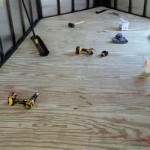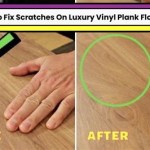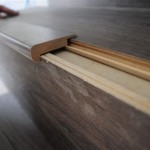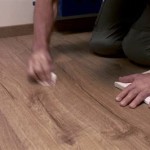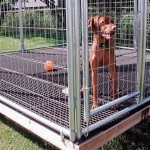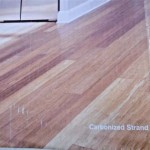Wood Look Vinyl Flooring: A Comprehensive Guide
Wood look vinyl flooring has rapidly gained popularity as a versatile and aesthetically pleasing alternative to traditional hardwood flooring. It offers the visual appeal of natural wood without the associated costs, maintenance requirements, and susceptibility to environmental factors. This article provides a detailed exploration of wood look vinyl flooring, covering its composition, types, advantages, installation, maintenance, and factors to consider when selecting the right option for a specific space.
Vinyl flooring, in general, is a synthetic flooring material composed primarily of polyvinyl chloride (PVC). Wood look vinyl flooring specifically mimics the appearance of natural wood through advanced printing and embossing techniques. High-resolution images of various wood species are printed onto a vinyl layer, and then a textured surface is applied to replicate the grain and feel of real wood. This process results in a flooring material that closely resembles hardwood but possesses distinct performance characteristics.
The construction of wood look vinyl flooring typically involves several layers. The bottom layer is often a backing that provides stability and cushioning. Above this lies the core layer, which can be made of different materials depending on the type of vinyl. The printed design layer, responsible for the wood look, resides above the core. Finally, a wear layer, usually made of transparent PVC or polyurethane, protects the design layer from scratches, stains, and wear.
Types of Wood Look Vinyl Flooring
Wood look vinyl flooring is available in several formats, each offering unique installation methods and performance attributes. Understanding these differences is crucial for selecting the most suitable option for a particular application.
Luxury Vinyl Plank (LVP): LVP is arguably the most popular type of wood look vinyl flooring. It comes in individual planks, similar in shape and size to hardwood planks. LVP offers a realistic wood appearance due to its detailed design layer and often embossed texture. It is typically thicker than sheet vinyl, providing enhanced durability and comfort underfoot. Installation methods for LVP include click-lock, glue-down, and loose-lay options. Click-lock LVP features interlocking edges that allow for a floating installation, requiring no adhesives or nails. Glue-down LVP is adhered directly to the subfloor, providing a more permanent and stable installation. Loose-lay LVP, as the name suggests, is simply laid on top of the subfloor, relying on its weight and friction to stay in place.
Luxury Vinyl Tile (LVT): LVT shares many characteristics with LVP, but it comes in tile form rather than planks. While LVT is often used to mimic stone or ceramic tile, it can also be designed to resemble wood. The wood-look LVT is usually available in square or rectangular tiles, allowing for the creation of unique patterns and designs. Similar to LVP, LVT is available in click-lock, glue-down, and loose-lay formats, offering flexibility in installation.
Sheet Vinyl: Sheet vinyl is a continuous roll of vinyl flooring that covers an entire room without seams. Wood look sheet vinyl offers a more affordable option compared to LVP and LVT, but it may not achieve the same level of realism in terms of texture and appearance. Sheet vinyl is typically glued down to the subfloor, requiring careful preparation to ensure a smooth and even surface. While sheet vinyl is relatively easy to clean and maintain, it is more prone to tearing or damage compared to LVP and LVT due to its thinner construction.
Rigid Core Vinyl: Rigid core vinyl flooring is engineered with an extremely durable and dimensionally stable core layer. This core is typically made of stone plastic composite (SPC) or wood plastic composite (WPC). SPC cores are primarily composed of limestone and PVC, resulting in a highly rigid and waterproof material. WPC cores, on the other hand, are made of wood flour, PVC, and foaming agents, offering a softer and more comfortable feel underfoot. Rigid core vinyl flooring is highly resistant to dents, scratches, and water damage, making it a suitable choice for high-traffic areas and moisture-prone environments.
Advantages of Wood Look Vinyl Flooring
Wood look vinyl flooring presents a compelling alternative to hardwood, offering a range of benefits that make it an attractive option for both residential and commercial applications.
Cost-Effectiveness: Compared to genuine hardwood flooring, wood look vinyl is significantly more affordable. The material costs are lower, and the installation process is often simpler, resulting in reduced labor expenses. This makes wood look vinyl a budget-friendly option for homeowners looking to achieve the aesthetic of hardwood without breaking the bank.
Water Resistance: One of the most significant advantages of wood look vinyl is its water resistance. Unlike hardwood, which is susceptible to water damage, vinyl flooring is impervious to moisture. This makes it an ideal choice for bathrooms, kitchens, laundry rooms, and basements, where exposure to water is common. The waterproof nature of vinyl flooring prevents warping, swelling, and mold growth, ensuring long-lasting performance in these challenging environments.
Durability: Wood look vinyl is exceptionally durable and resistant to wear and tear. The wear layer protects the design layer from scratches, stains, and fading, ensuring that the flooring maintains its appearance for many years. This makes vinyl flooring suitable for high-traffic areas, such as hallways, living rooms, and commercial spaces. The durability of vinyl flooring also reduces the need for frequent replacements, saving homeowners money in the long run.
Ease of Maintenance: Maintaining wood look vinyl flooring is relatively simple and straightforward. Regular sweeping or vacuuming is sufficient to remove dirt and debris. For deeper cleaning, a damp mop with a mild detergent can be used. Unlike hardwood, vinyl flooring does not require waxing, polishing, or refinishing. The low maintenance requirements of vinyl flooring make it a practical choice for busy households and commercial settings.
Comfort Underfoot: Wood look vinyl flooring is generally more comfortable to walk on compared to hardwood or tile. The cushioning provided by the core layer and backing material offers a softer and more forgiving surface. This can be particularly beneficial for individuals who spend long periods standing or walking on the floor. The comfort underfoot also makes vinyl flooring a suitable choice for homes with young children or elderly individuals.
Design Versatility: Wood look vinyl flooring is available in a wide range of styles, colors, and textures. It can mimic various wood species, from classic oak and maple to exotic woods like walnut and bamboo. The design options are virtually limitless, allowing homeowners to create the perfect look for their space. The ability to replicate different wood species and patterns makes vinyl flooring a versatile choice for various design styles, from traditional to modern.
Installation and Maintenance
Proper installation and maintenance are crucial for ensuring the longevity and performance of wood look vinyl flooring. The installation process varies depending on the type of vinyl flooring, but generally involves preparing the subfloor, installing the flooring material, and finishing the edges and transitions.
Subfloor Preparation: A smooth, level, and clean subfloor is essential for a successful vinyl flooring installation. Any imperfections in the subfloor, such as cracks, holes, or unevenness, must be addressed before installing the vinyl. Self-leveling compounds can be used to smooth out uneven surfaces, and patching compounds can be used to fill in cracks and holes. The subfloor should also be free of dust, debris, and moisture.
Installation Methods: As mentioned earlier, wood look vinyl flooring can be installed using click-lock, glue-down, or loose-lay methods. Click-lock installation is the easiest and most common method, particularly for LVP and LVT. The planks or tiles simply interlock together, creating a floating floor that is not attached to the subfloor. Glue-down installation involves applying adhesive to the subfloor and then pressing the vinyl flooring into the adhesive. This method provides a more permanent and stable installation, but it requires more skill and effort. Loose-lay installation is the simplest method, but it is typically only suitable for smaller areas or areas with low traffic.
Maintenance Procedures: Maintaining wood look vinyl flooring is relatively simple. Regular sweeping or vacuuming is sufficient to remove dirt and debris. For deeper cleaning, a damp mop with a mild detergent can be used. Avoid using harsh chemicals, abrasive cleaners, or steam mops, as these can damage the wear layer. Protect the flooring from furniture legs by using felt pads, and avoid dragging heavy objects across the floor. Promptly clean up spills to prevent staining. With proper care and maintenance, wood look vinyl flooring can maintain its beauty and performance for many years.
Selecting the right type of wood look vinyl flooring involves considering several factors, including the intended use of the space, the level of traffic, the presence of moisture, and the desired aesthetic. For high-traffic areas, a thicker wear layer is recommended. For moisture-prone environments, a waterproof option like SPC rigid core vinyl is ideal. Consider the overall design style of the space and choose a wood look that complements the existing décor. It is also advisable to obtain samples of different vinyl flooring options and compare them in the actual lighting conditions of the space.
Wood look vinyl flooring offers a practical and aesthetically pleasing alternative to hardwood, providing the beauty of natural wood with enhanced durability, water resistance, and ease of maintenance. With careful consideration of the different types, installation methods, and maintenance procedures, homeowners and commercial property owners can enjoy the benefits of wood look vinyl flooring for many years to come.

Types Of Vinyl Flooring The Home Depot

Style Selections Providence Oak 10 Mil X 12 Ft W Waterproof Cut To Length Vinyl Sheet Flooring In The Department At Com

2024 Vinyl Flooring Trends 20 Hot Ideas Inc

Vinyl Flooring That Looks Like Wood Lx Hausys

Types Of Vinyl Flooring The Home Depot

Buy Essence Wood Effect Vinyl Flooring Next Day

Wood Effect Sheet Vinyl Flooring Natural Oak Design Rivington

Vinyl Wood Look Flooring Ideas

Earl Grey Chevron Harvey Maria
Vinyl Flooring That Looks Like Wood
Related Posts

